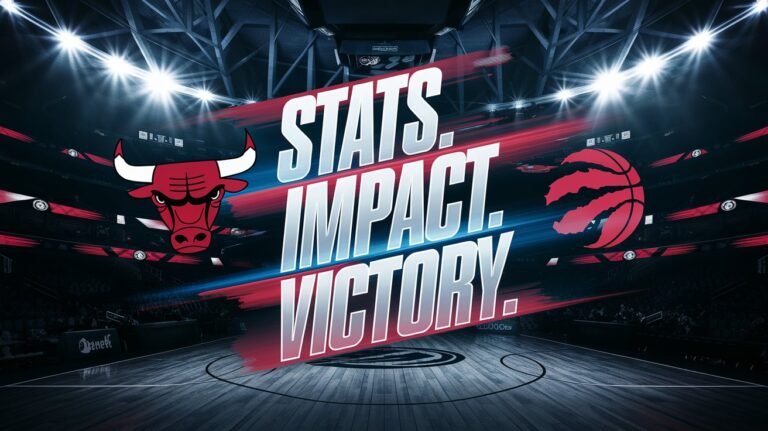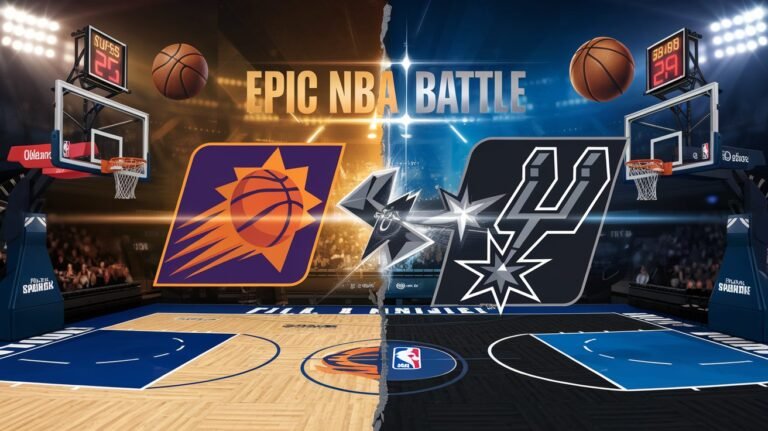NCAA Baseball Bracketology 2025: Top Seeds & Bubble Teams
As the 2025 college baseball season heads into its final stretch, fans, analysts, and coaching staffs alike have one question on their minds: Who’s in and who’s out of the NCAA tournament? NCAA baseball bracketology provides a snapshot of the postseason landscape, offering data-driven projections, identifying potential regional hosts, and spotlighting the bubble teams scrambling for their tournament lives. With Selection Monday approaching, the race for one of the 64 coveted spots is heating up — and not every powerhouse is safe.
In this detailed breakdown, we’ll cover the fundamentals of NCAA baseball bracketology, explore the key metrics used to build the field, examine the latest regional projections, analyze the bubble, and look at how conference play and tournament outcomes will shift the bracket before the final reveal.
What Is NCAA Baseball Bracketology?
NCAA baseball bracketology is the analytical practice of projecting the NCAA Division I Baseball Championship field of 64 before the official bracket is released. Like its basketball counterpart, bracketology aims to predict which teams will make the tournament, where they’ll be seeded, and which schools will host regionals and super regionals. Analysts use statistical models, team records, performance metrics, and recent trends to estimate what the NCAA selection committee is likely to do.
Bracketology is not official, but it’s a powerful forecasting tool — particularly for fans who want to see how their team stacks up against the field or for coaching staffs aiming to understand what they need to do down the stretch. From regional seeding to national top-eight selections, bracketologists help contextualize a complex and constantly changing postseason picture.
The Anatomy of the NCAA Baseball Tournament
Before diving into projections, it’s important to understand the structure of the NCAA tournament. The field consists of 64 teams, including 31 automatic bids awarded to conference champions and 33 at-large bids chosen by the selection committee. These teams are placed into 16 regional sites, each hosting a four-team, double-elimination bracket.
The winners of the 16 regionals advance to the Super Regionals, which are best-of-three series hosted by the higher-seeded teams. From there, eight teams move on to the Men’s College World Series in Omaha, where the ultimate national champion is crowned.
Each regional is seeded 1 through 4, with the top 16 teams earning the right to host. The eight best teams overall receive national seeds, meaning they can host both regional and super regional rounds if they advance. The fight for these top positions — and the strategic advantage of playing at home — is one of the core elements of bracketology.
Metrics That Shape the Bracket
To understand how bracketologists and the NCAA committee build the field, you need to look at the key metrics that drive decisions. These include:
- RPI (Ratings Percentage Index): A formula that accounts for a team’s winning percentage, their opponents’ winning percentage, and their opponents’ opponents’ winning percentage. It remains the committee’s cornerstone tool for evaluating strength of schedule and quality wins.
- Strength of Schedule (SoS): Teams that challenge themselves in non-conference play often earn credit in the eyes of the committee — even in losses — particularly if they compete on the road against other ranked opponents.
- Quad Wins: While more associated with basketball, baseball analysts track “quad” wins as well. Wins against top-25 or top-50 RPI teams are weighed more heavily than victories over weaker programs.
- Conference Standing: Regular-season performance in a power conference like the SEC or ACC can mean more than winning a mid-major league. But bubble teams in smaller conferences often need to win their tournament to qualify.
- Road Record: Playing and winning on the road demonstrates toughness and is something the committee looks for when distinguishing closely matched teams.
- Head-to-Head and Common Opponents: Especially important for comparing bubble teams or potential hosts.
Projected Top 8 National Seeds
As of early April 2025, several programs have positioned themselves as frontrunners for national seeds. These teams not only expect to host regionals but also to remain at home for the Super Regionals if they advance.
- Tennessee (SEC) – Riding high with a dominant RPI, top-tier pitching, and one of the most explosive offenses in the nation, the Volunteers are the current No. 1 overall seed.
- Wake Forest (ACC) – Their consistency and elite run prevention have made Wake a top contender despite a few tough road losses.
- Texas A&M (SEC) – The Aggies have wins against multiple top-25 RPI teams and continue to rise thanks to key series wins in conference play.
- Oregon State (Pac-12) – The Beavers are tearing through the Pac-12, and their non-conference resume helps them hold a top-four position.
- Clemson (ACC) – With a balanced lineup and a strong RPI, the Tigers are peaking at the right time.
- Arkansas (SEC) – Always a force, Arkansas continues to churn out wins and boasts one of the toughest home field advantages in college baseball.
- East Carolina (AAC) – The Pirates have enough quality wins and road success to push for a national seed — assuming they win out in conference play.
- Florida State (ACC) – After a rebuild in recent years, FSU has roared back to national prominence with a deep rotation and formidable bats.
These top-eight seeds can change weekly depending on series outcomes, especially as teams head into conference tournament play.
Bubble Teams: Who’s In and Who’s Out?
The bubble is where bracketology gets messy — and fun. These are the teams with incomplete résumés, inconsistent performances, or glaring weaknesses that keep them from being a lock. As of now, several programs are fighting to stay alive or break into the field:
- NC State: A talented but uneven team, NC State has flirted with the bubble for weeks. Solid RPI and a few big wins are keeping them afloat, but they’ll need to finish strong to stay in.
- Texas Tech: The Red Raiders have some great wins but have also dropped several games they should’ve won. A good run in the Big 12 tourney could be the key.
- Indiana State: Always a threat in the Missouri Valley, Indiana State’s lack of marquee wins might hurt them unless they win the conference tournament.
- UC Irvine: Playing out west means fewer RPI-boosting opportunities. Irvine needs to dominate their remaining schedule to stay in the conversation.
- Georgia Tech: Stuck in the middle of the ACC pack, Tech has enough to sneak in — but can’t afford a losing streak in April.
- Louisiana: A potential at-large out of the Sun Belt, but their fate hinges on how teams from bigger leagues finish the season.
At this point in the year, no team is safe. A few sweeps — or getting swept — could dramatically alter a team’s postseason trajectory. Bubble watch intensifies with every pitch.
Mid-Majors and Bid Thieves
While power conferences dominate the spotlight, bracketologists keep a close eye on mid-majors for two reasons: strong sleeper teams and potential bid thieves. A “bid thief” is a team that wins their conference tournament unexpectedly, stealing an automatic bid and bumping a bubble team out of the tournament.
Programs like Campbell, Dallas Baptist, Southern Miss, and Coastal Carolina have tournament experience and enough muscle to either win their leagues or make trouble for a host team in a regional. If any of them fall in their conference tournament but still have strong RPIs, it creates tension for teams on the edge.
Conversely, if a team like Towson or North Dakota State pulls a surprise in their conference tournament, they could shrink the at-large pool by one, squeezing out more deserving teams from power leagues.
Conference Breakdown: Which Leagues Are Dominating?
The SEC remains the undisputed king of college baseball. In current projections, the SEC could send up to 12 teams to the tournament — an astonishing figure that reflects the league’s depth. Even teams like Mississippi State or Alabama, sitting in the lower half of the standings, have RPIs high enough to be in the mix.
The ACC isn’t far behind, potentially putting 9-10 teams into the bracket. From top-tier contenders like Wake Forest and Clemson to dangerous dark horses like Georgia Tech and Miami, the league has plenty of firepower.
The Big 12, now realigned and still dangerous, could send 5-6 teams, including Texas, Oklahoma State, and TCU. The Pac-12 (in possibly its last year as we know it) features Oregon State and UCLA as likely entrants.
The American, Sun Belt, and Missouri Valley each look to send 2-3 teams, with the potential for more if strong mid-majors don’t win their tournaments.
Hosting Picture: Who Might Host a Regional?
Beyond the top-eight national seeds, several programs are in line to host regionals if they finish strong. These include:
- LSU: Despite some early stumbles, their high-end talent and strength of schedule could land them a regional.
- North Carolina: Playing well in the ACC and positioned solidly in the RPI.
- Arizona State: Quietly climbing the ranks in the Pac-12 with a strong second half.
- South Carolina: Could edge in if they close strong in conference play.
Hosting is a major advantage in the NCAA tournament. Teams fight hard for that privilege, especially as we move into late April and May.
Key Dates to Watch
Timing is everything in bracketology. Here are the critical dates on the NCAA baseball calendar:
- Conference Tournaments: May 20–25, 2025. These games will determine automatic bids and provide late-season résumé boosters.
- Selection Show: Monday, May 26, 2025. The 64-team field will be revealed live on ESPN2 at noon ET.
- Regionals: May 30 – June 2, 2025
- Super Regionals: June 6–9, 2025
- Men’s College World Series: Starts June 13, 2025, in Omaha, NE
Teams on the bubble have just weeks to make their final case. One more sweep, one more statement win, or one less loss could be the difference between Omaha and watching from home.
Final Thoughts: Bracketology Is an Art, Not a Science
While NCAA baseball bracketology leans heavily on data, it’s not an exact science. Human decisions play a role, and selection committee members weigh different factors in different ways. A hot team may get the benefit of the doubt, while a cold finish could doom a team that looked like a lock in March.
What’s clear is that the 2025 NCAA baseball tournament field is one of the deepest and most competitive in years. With multiple legitimate national title contenders, upstart mid-majors, and a bubble bursting at the seams, the final weeks of the season promise high drama. As projections continue to evolve, the question isn’t just who gets in — but who gets hot at the right time.
Stay tuned, because in NCAA baseball bracketology, everything changes with one swing.
Read Also Our This Post: Purdue Basketball Fans Can’t Miss This – Breaking Updates & Insights







